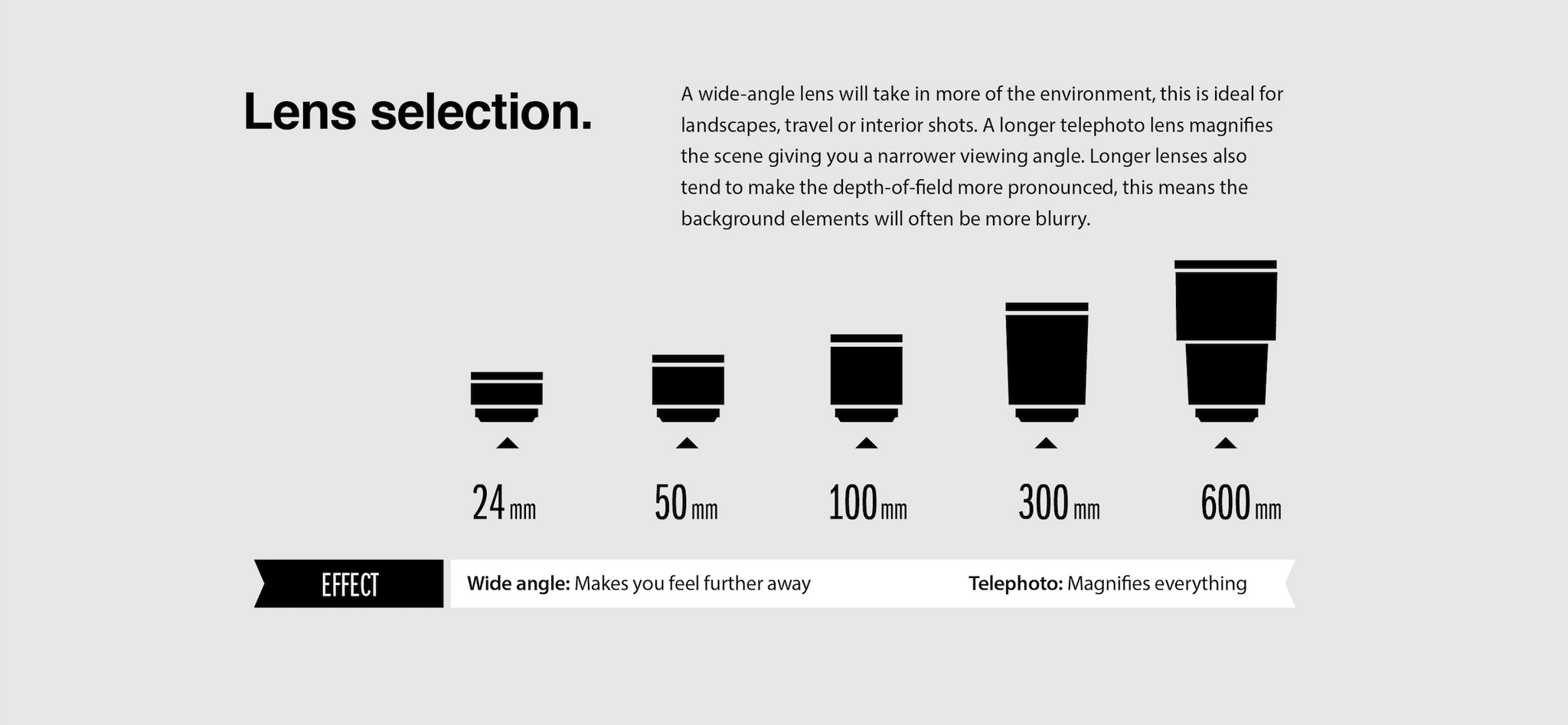How a digital camera works

Ever wanted to know how a digital camera works? If you need a quick reference guide with out all the jargon you have come to the right place. Below is a step-by-step guide to how your DSLR camera works. The key functionality of your camera is set out with easy to understand infographics along with a simple explanation. Once you have mastered the basics take this guide with you the next time you're out and start putting your new found skills into practice.
How does the aperture mechanism work
The aperture is an adjustable hole in the lens which lets light into the camera. It can be adjusted to vary the amount of light on the camera sensor. A large aperture lets more light in, and small aperture reduces the amount of light.

How to create depth of field using the aperture
The aperture also controls the depth of field, in simple terms this refers to how much of the image stays sharp from the focus point. A large aperture will create a shallow depth of field (making the background blurry). A small aperture will create a large depth of field (keeping everything in focus).

What is shutter speed and how to use it
Shutter speed is the length of time the shutter is open allowing light on the camera sensor. This is sometimes called exposure time. A faster shutter speed will freeze action (1/250sec), a slow shutter will allow action to blur (1/15sec)

What is ISO / film speed
ISO is the level of sensitivity of your camera has to available light. Shooting with a low ISO will give you a high quality image with fine grain, to do this you’ll also need lots of light. Using a higher ISO means can take photos in low-light conditions, the trade-off is it will have more grain or “noise”.

What are the differences between lenses
A wide-angle lens will take in more of the environment, this is ideal for landscapes, travel or interior shots. A longer telephoto lens magnifies the scene giving you a narrower viewing angle. Longer lenses also tend to make the depth-of-field more pronounced, this means the background elements will often be more blurry.

3 Responses
Silvia D'Agruma
Hi Andrew! I also love your infographics and would love to show them in my class…do you sell these as posters? I would love to share your website with my students…is that ok?
KHadar
These are wonderful! I am teaching camera operations to incoming freshmen, we are starting with basics that are so far removed from Instagram that I need visuals! Thank you for these infographics! I will give credit of course!
Jonathan Hane
Hey Andrew!
Just came across your beautiful camera inforgrahpics as I was putting together a presentation for a photography class. I work for a non-profit media school in Thailand and we have a large school coming up next week I’ve been preparing for. Of course with all proper credit given to you, may I use your photos in my presentation? They are awesome! Loved reading through your post!
Leave a comment
Comments will be approved before showing up.






Andrew Smith
Author
I am a Creative Director living and working in New Zealand, I have a special interest in travel and landscape photography, I also produce presets for Adobe Lightroom.